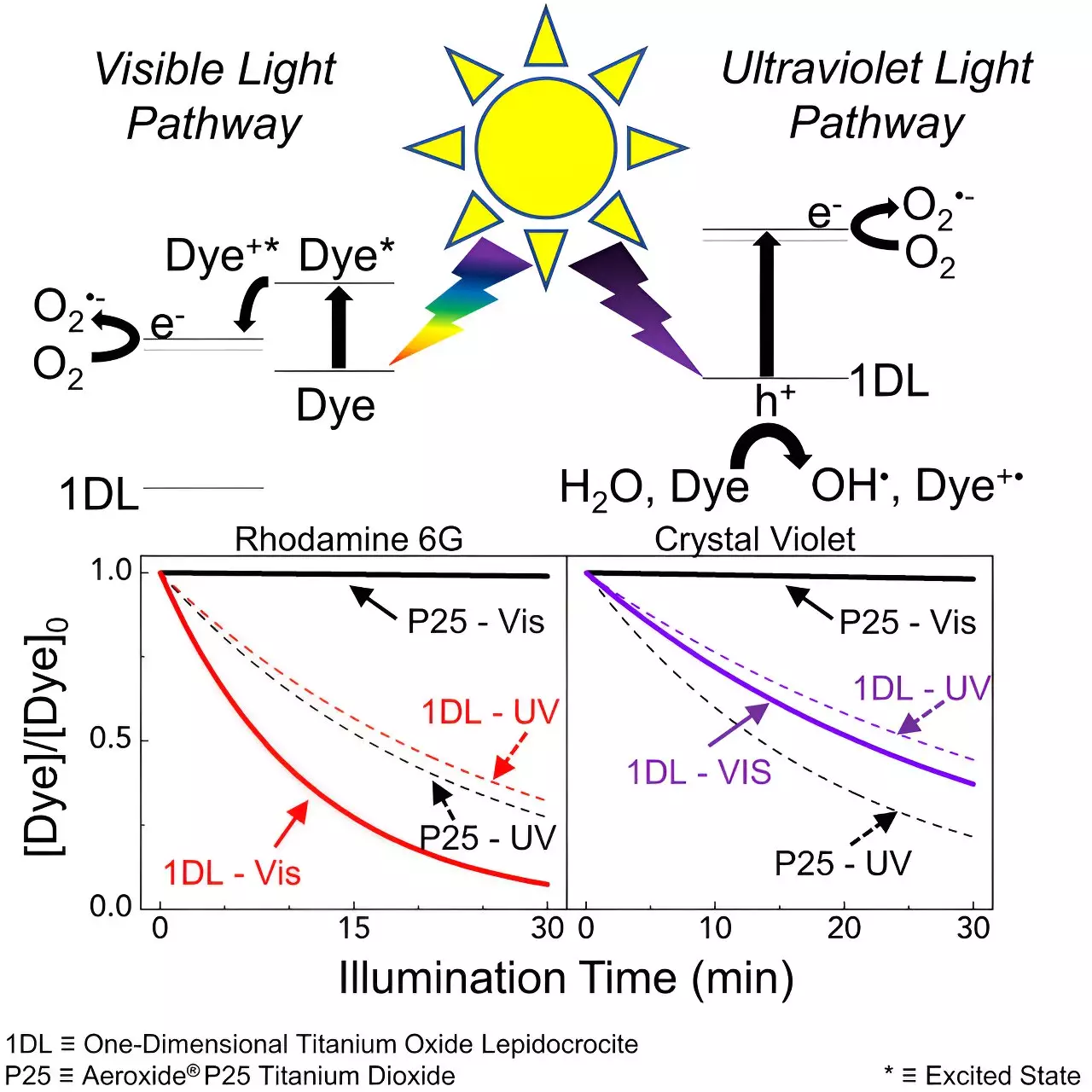

Wastewater treatment is a critical process that aims to remove harmful pollutants and chemicals from water sources, ensuring clean and safe water for consumption and environmental protection. However, the removal of dyes, such as those discharged by textile, cosmetic, ink, and paper manufacturers, has posed a significant challenge for traditional treatment methods. These dyes, known for their high toxicity and potential carcinogenicity, can contaminate water and have detrimental effects on human health and aquatic ecosystems.
A team of researchers from Drexel University’s College of Engineering, led by Dr. Michel Barsoum, has made a groundbreaking discovery in the field of wastewater treatment. Their study focused on the use of a one-dimensional, lepidocrocite structured titanium oxide nanofilament as a photocatalyst to break down two common dye pollutants: rhodamine 6G and crystal violet.
The nanofilament demonstrated remarkable efficacy in degrading the dyes under visible light. Within just 30 minutes, the material reduced the concentrations of rhodamine 6G and crystal violet in the water by 90% and 64%, respectively. The process starts with adsorption, where the dye adheres to the surface of the nanofilament, and once illuminated, undergoes photocatalysis. The dye sensitizes the nanofilaments to visible light, accelerating the degradation process and breaking the dye down into harmless byproducts such as carbon dioxide and water.
Wastewater treatment is a pressing global concern, with households and industries generating nearly 380 billion cubic tons of wastewater annually. Unfortunately, only 24% of this wastewater is adequately treated, mainly due to the challenges involved in removing complex and persistent contaminants like dyes. The common treatment methods, including sedimentation, biological oxidation, and chemical-physical treatment, have proven ineffective in removing dyes due to their complex molecular structure and water-soluble nature.
Various alternative methods have been explored to address the issue of dye removal. Adsorption with different materials, such as clay, activated carbon, and iron oxide, has shown promise in separating the dye from the water. However, these methods only concentrate the dye on adsorbent materials within the wastewater, rather than breaking it down entirely. Photocatalysts were initially considered a potential solution, but they often require UV light treatment, which consumes significant energy.
The key breakthrough achieved by the nanofilament lies in its ability to self-sensitize and respond to visible light. This property makes the nanofilament more sensitive to light sources that are readily available, such as sunlight, significantly reducing the energy consumption and financial costs associated with treatment. Moreover, this visible-light-driven approach proves to be highly effective in removing dyes from wastewater, eliminating toxic effluents without the need for additional toxins or energy.
The research team’s study not only highlights the nanofilament’s potential for wastewater treatment but also opens doors to other fields of application, such as solar cells and optical devices. By harnessing sunlight, the same nanofilament has already shown promising results in hydrogen separation for green fuel generation. This multifunctional material represents a significant step in advancing various sustainable technologies.
The breakthrough achieved by the team at Drexel University’s College of Engineering offers a promising solution for the removal of toxic dyes from wastewater. The one-dimensional, lepidocrocite structured titanium oxide nanofilament proves to be an efficient and sustainable photocatalyst under visible light, breaking down common dye pollutants effectively. This discovery not only improves the effectiveness of wastewater treatment processes but also reduces the energy consumption and financial costs associated with the removal of dyes. With its self-sensitization behavior, the nanofilament demonstrates great potential in addressing the global concern of wastewater treatment while also providing opportunities for advancement in other fields. As further research and development unfold, the possibilities of this material continue to expand, laying the foundation for a cleaner and more sustainable future.
Cells form the foundation of all living organisms, and gaining insights into their inner workings…
Mosquitoes are not just an irritating nuisance; they are deadly vectors that transmit a range…
In the quest for sustainable living, consumers often hold fast to the belief that glass…
For over a century, the astral mystery surrounding Barnard's Star, a unique red dwarf just…
In the realm of catalysis, particularly in the context of oxygen evolution reactions (OER), understanding…
Recent research has illuminated a groundbreaking connection between blood donation frequency and the health of…
This website uses cookies.